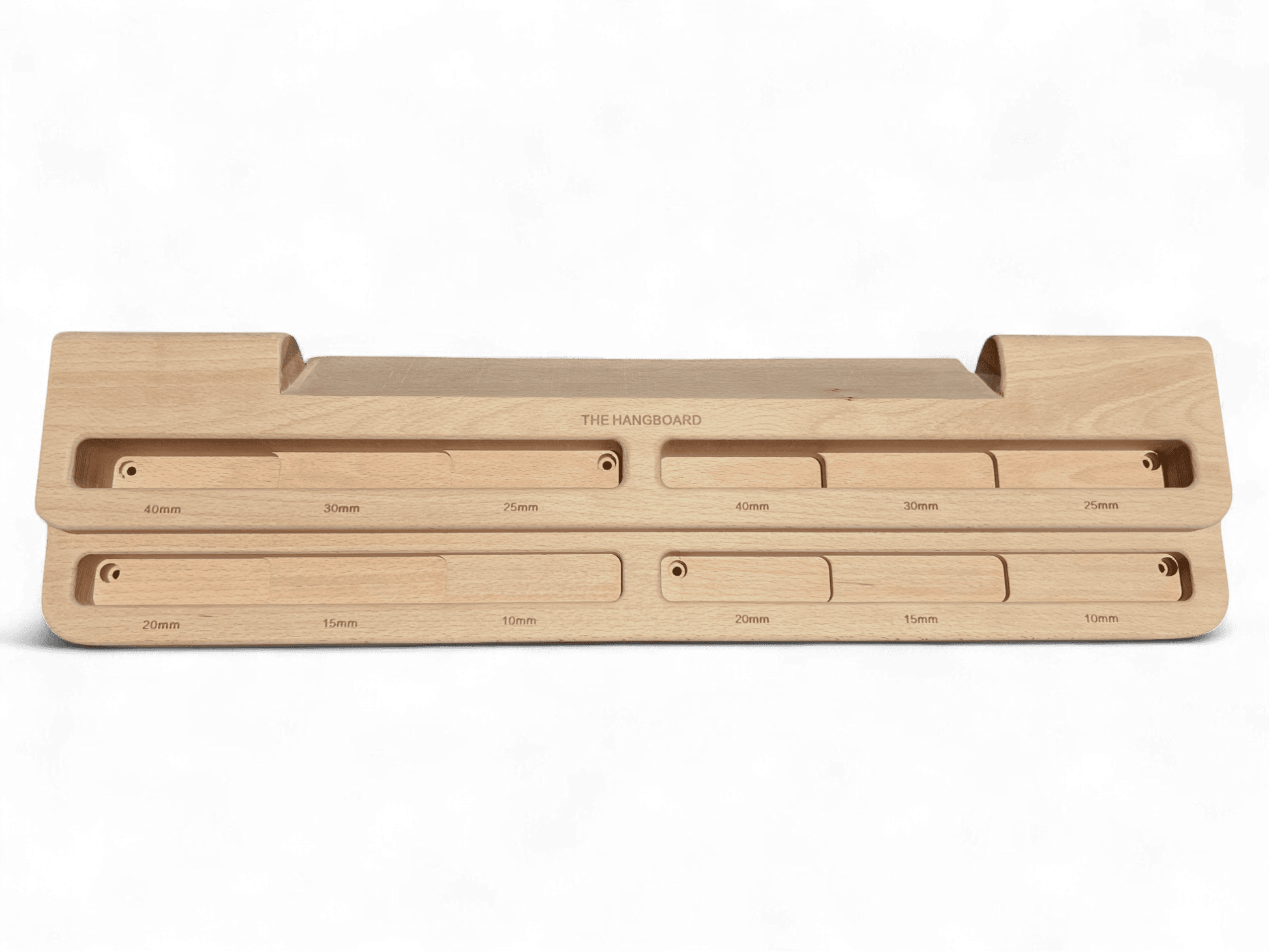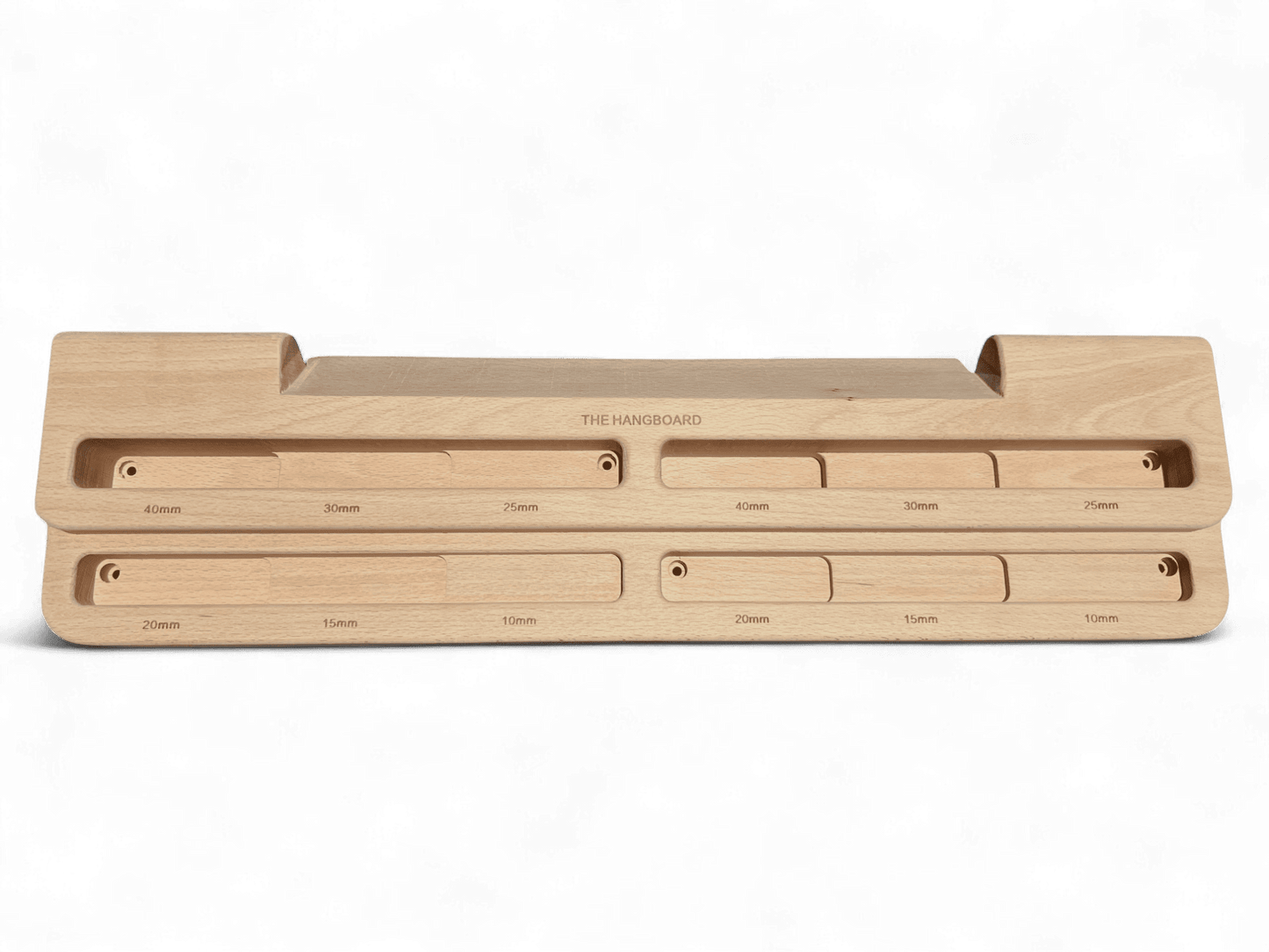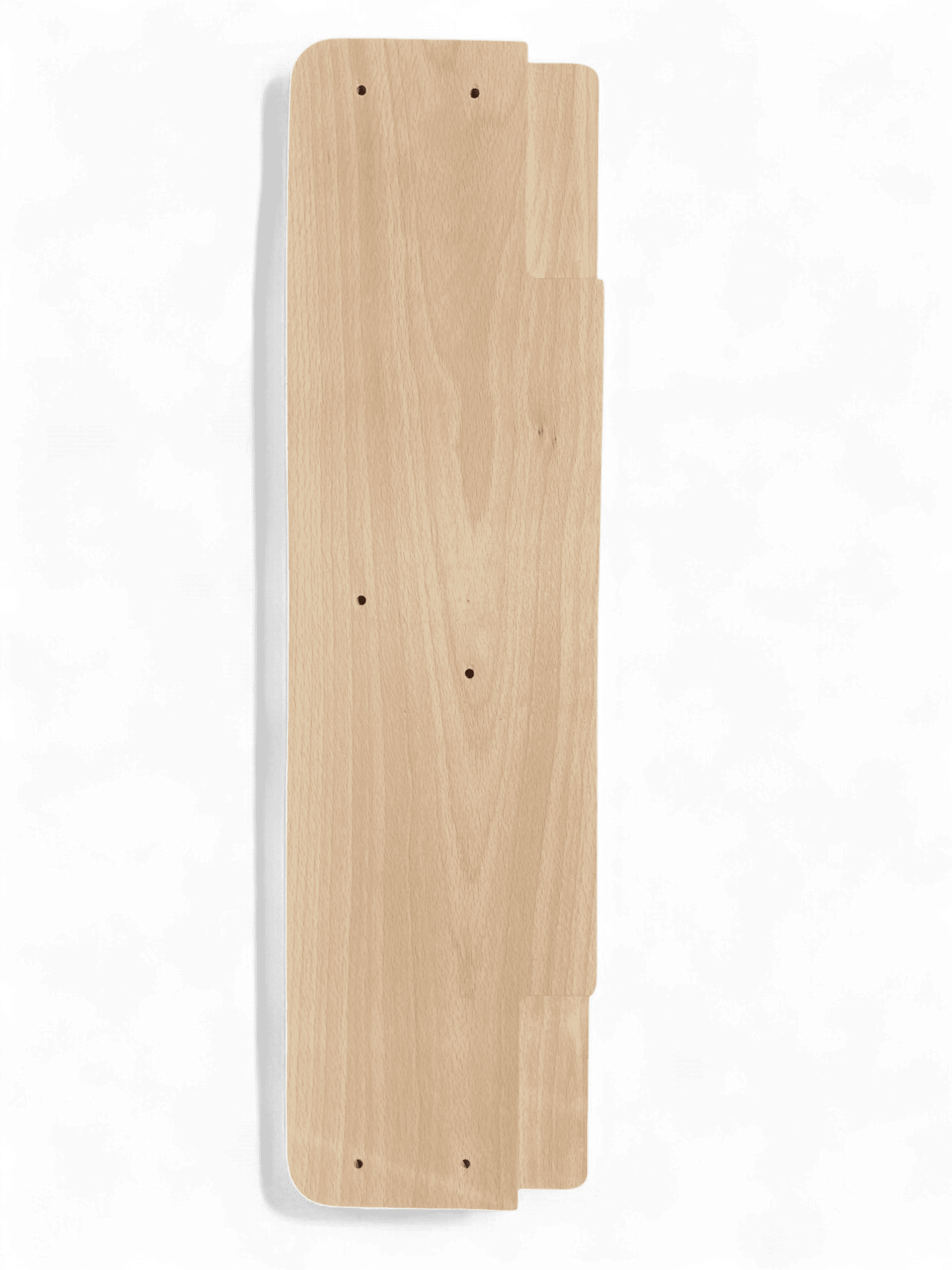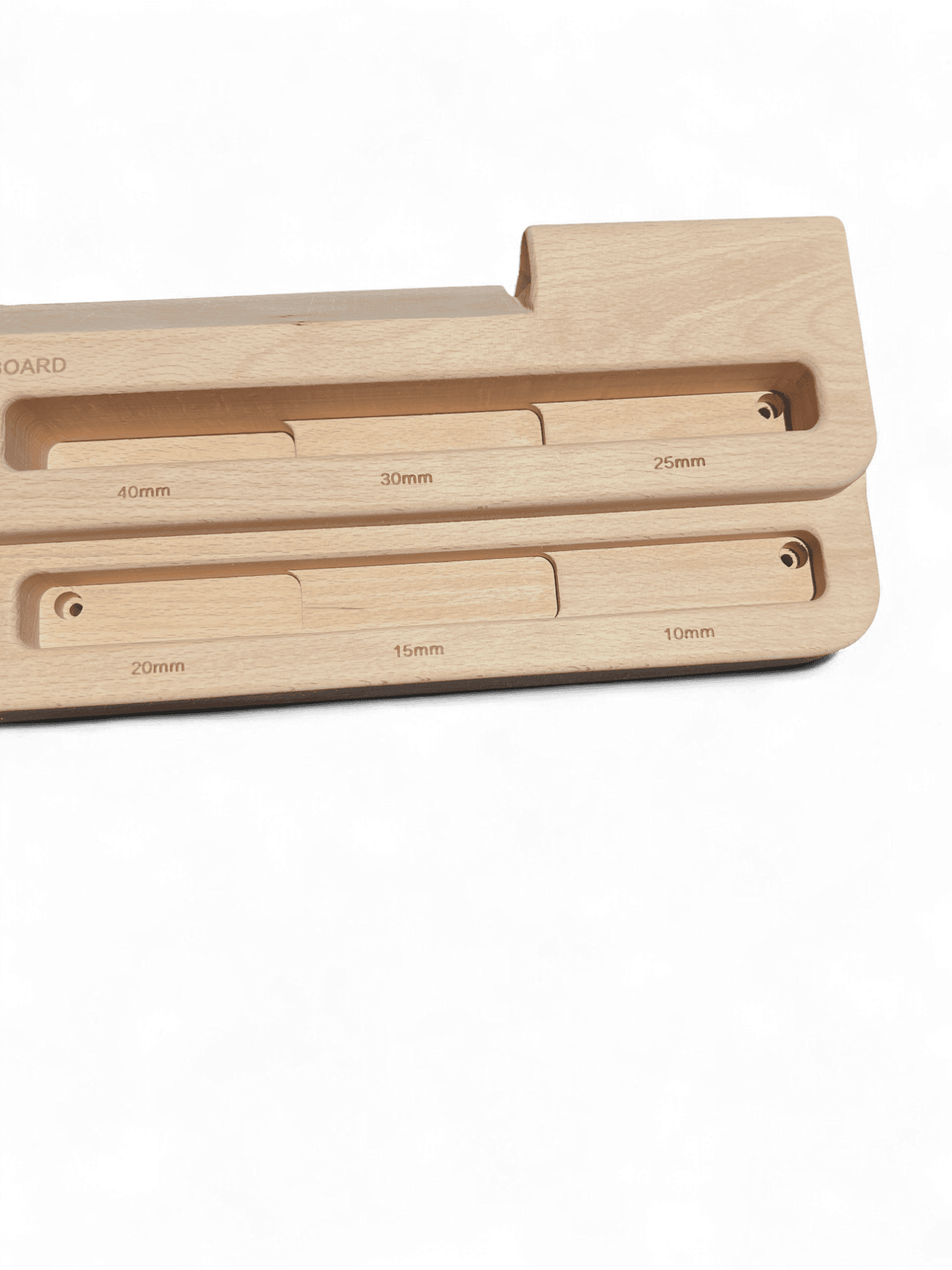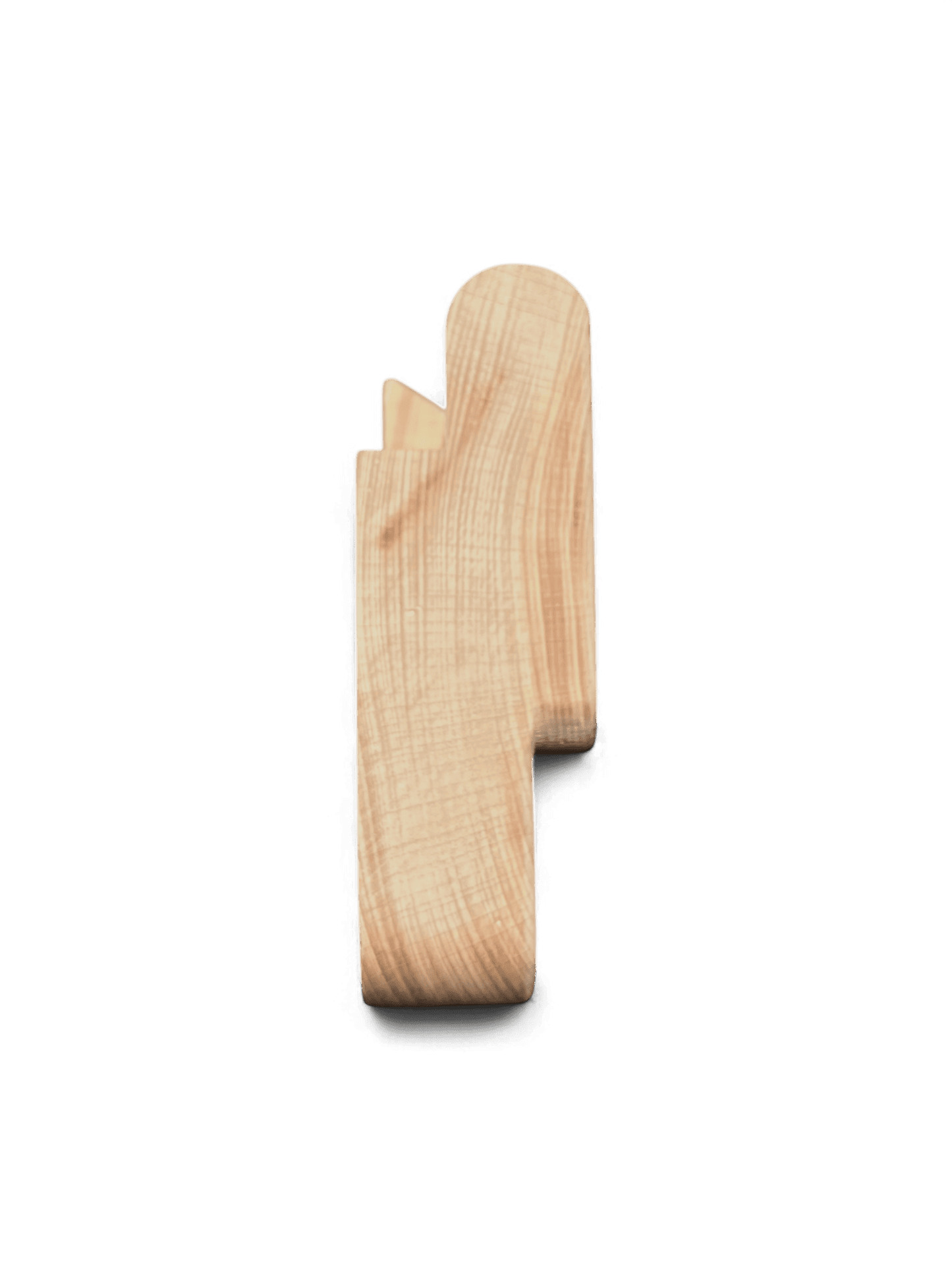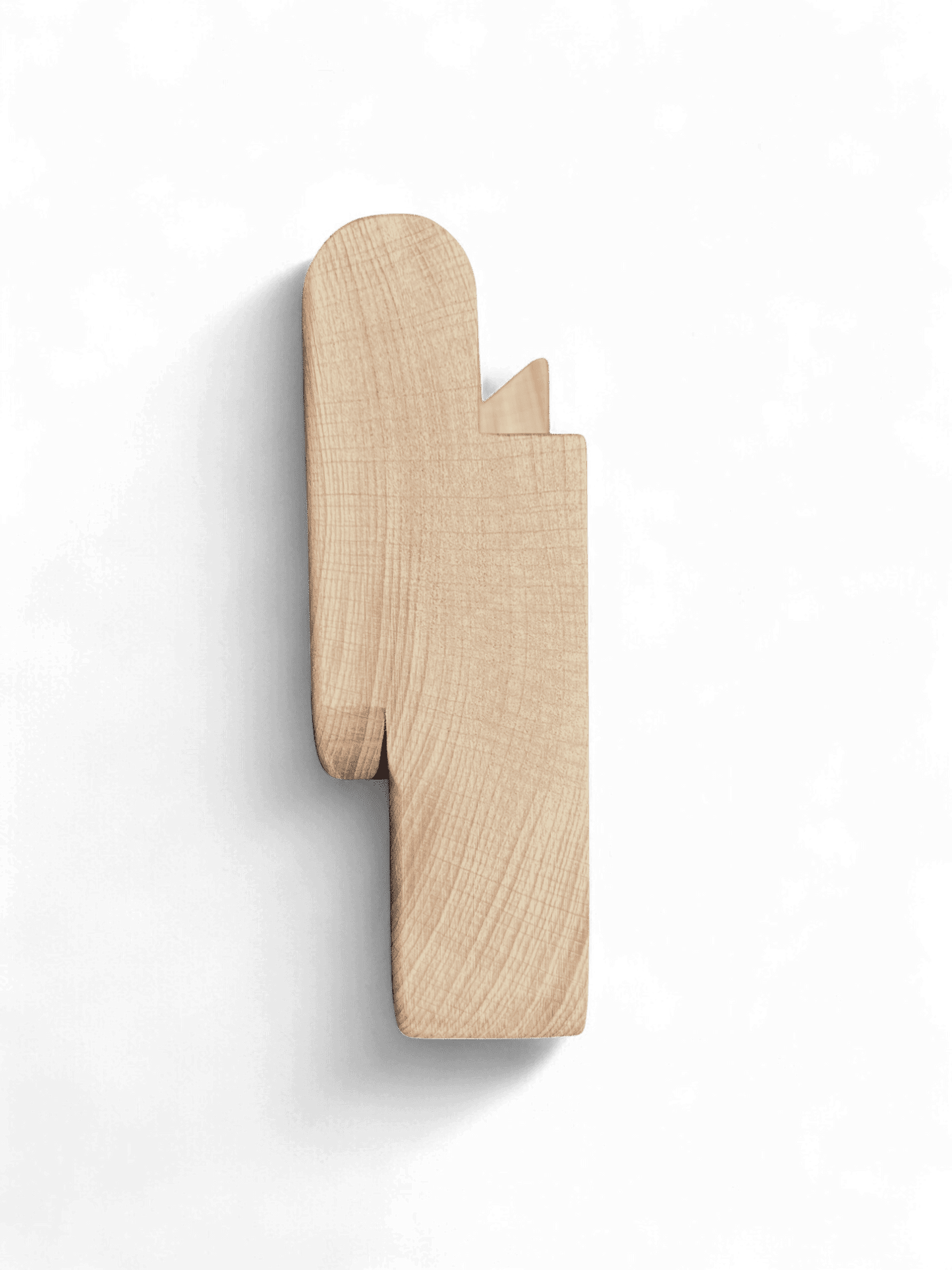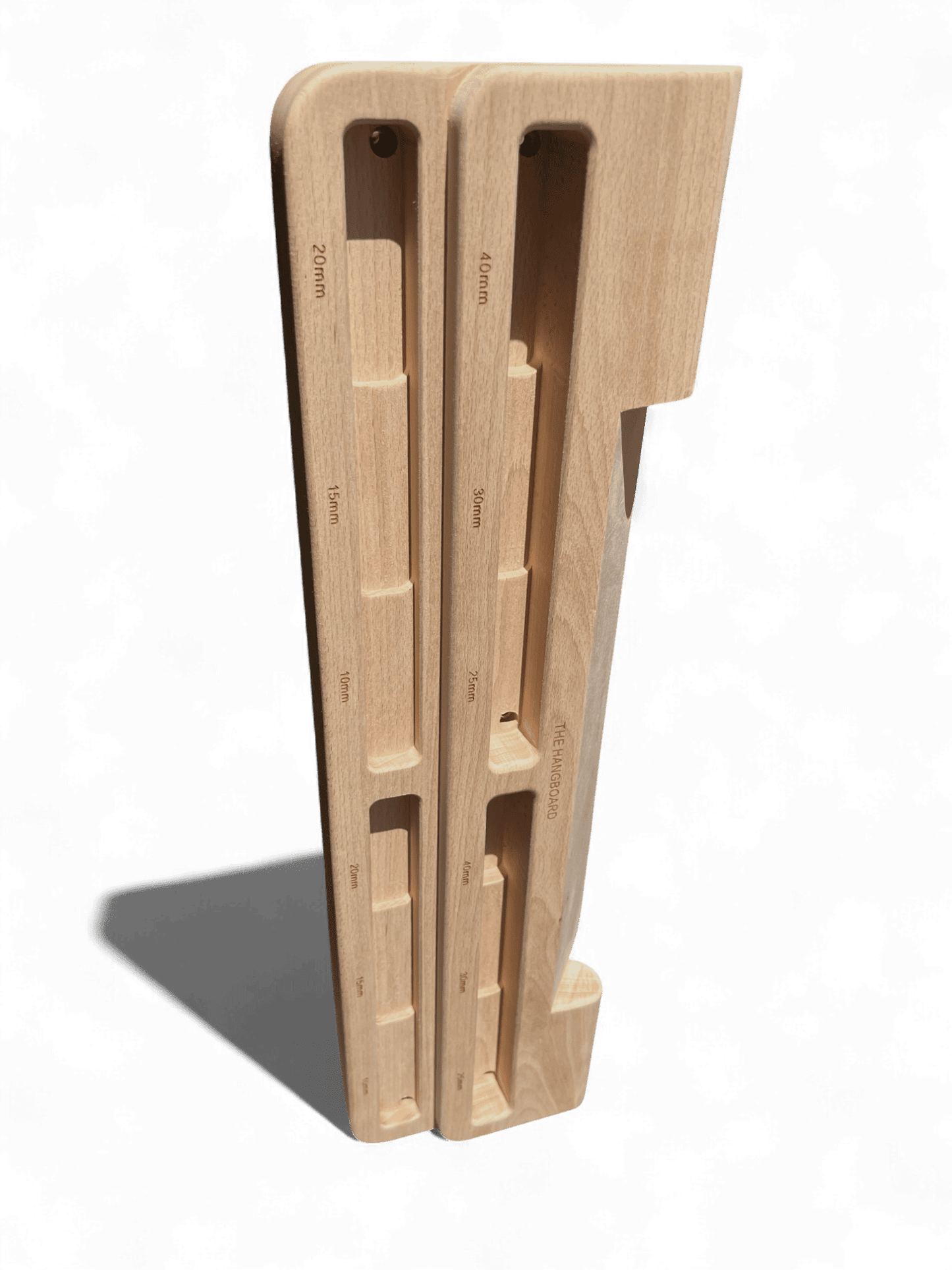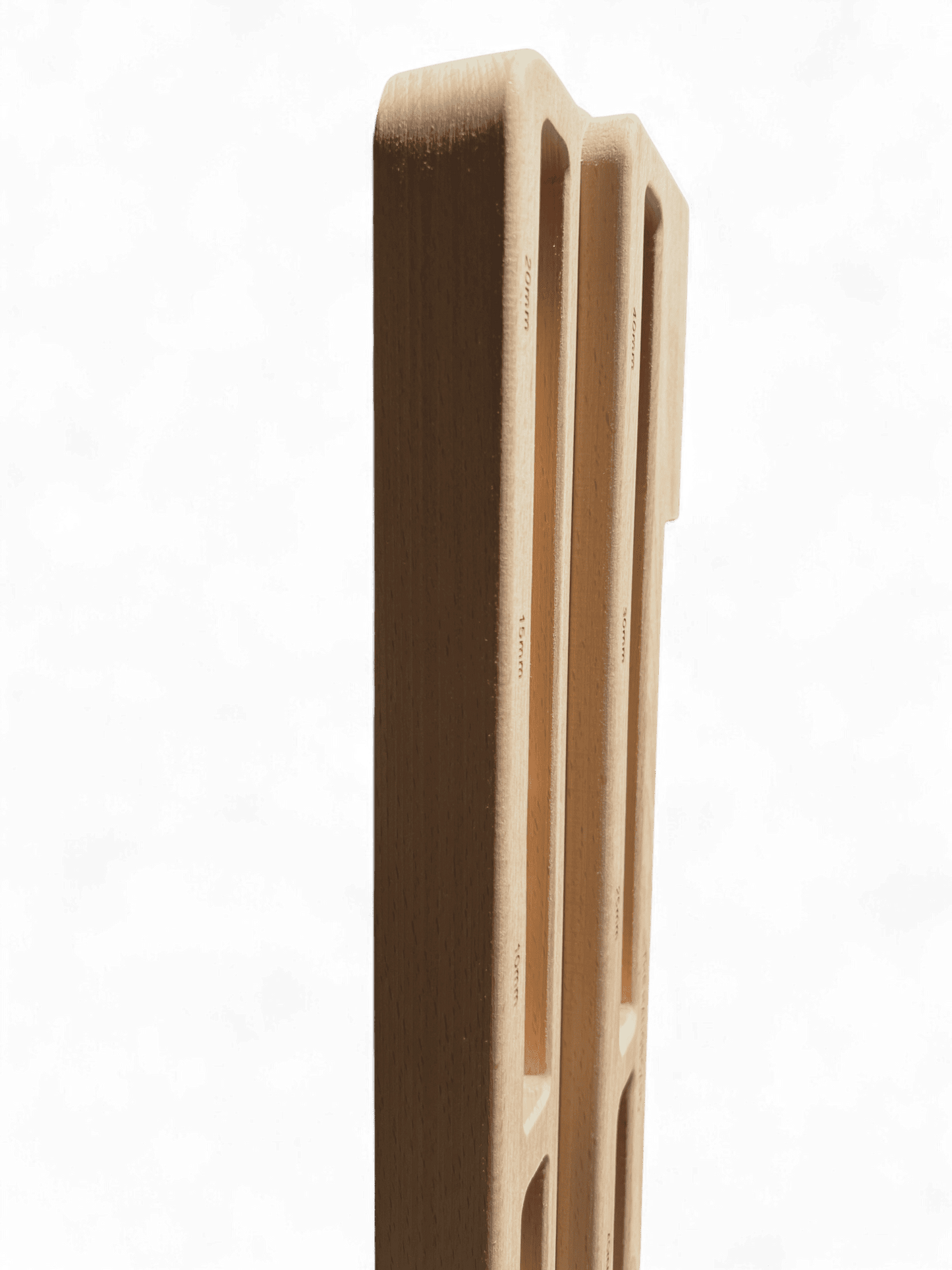Dogs are great companions, but portable hangboards may be better– they don’t require cleanup and won’t get you in trouble at the crag for barking or stealing snacks. Plus, a portable hangboard is travel-ready and can help make you stronger and help you send your project.
If you’ve been wondering how to stay in climbing shape when you travel or warm up without ruining your skin before trying your project, the answer is simple– a portable hangboard.
In this article, I’ll explain what a portable hangboard is, how it can be used to up your climbing game, and share my thoughts on some of the best portable hangboards you can try for yourself.
What is a Portable Hangboard?
A portable hangboard is a small, portable climbing training tool that you can use to warm up, and improve finger strength, power endurance, and long endurance. Portable hangboards are typically made of wood or plastic and have a variety of holds of different shapes and sizes. Portable hangboards can be hung from a variety of surfaces, including trees, doorways, and even the pull-up bar in your gym.
Advantages of Portable Hangboards
Traditional hangboards are great, but portable hangboards have some advantages that might make them a better training tool, depending on your needs.
- They are small, light, and packable, so you can take them anywhere.
- They are relatively inexpensive.
- They can be installed in various places and don’t require hardware or power tools.
- They can be used as a traditional hangboard or combined with lifting pins and weights.
Disadvantages of Portable Hangboards
But, of course, nothing is perfect. Therefore, there are some disadvantages worth mentioning.
- They may not be as sturdy as traditional hangboards or freestanding hangboards.
- They may not have as many holds as traditional hangboards.
- They may not be as comfortable to use as traditional hangboards.
- The non-fixed nature can be hard to get used to.
How to Hang a Portable Hangboard
One of the primary benefits of portable hangboards is that you can use them almost anywhere. And you don’t need a doorway, hardware, or power tools to install them.
- Find a sturdy object like a healthy tree branch, pull-up bars, or the first bolt on a steep sport climb.
- Attach the hangboard to the object. Often portable hangboards come with a carabiner for this purpose. If yours doesn’t, use an old carabiner.
- Make sure the hangboard is level and that the straps are secure.
- Then, hang to your heart’s content and fire off your project!
Pro tip– if you have nowhere to hang it up, you can still use your hangboard to warm up or get a light workout by stepping on the straps of the board with your foot and pulling upward. Or by sitting down, extending one leg, hanging the board around your foot, and pulling inward.
And if somehow you landed on this page when looking for how to mount a regular hangboard, we have an article for that too.
How to Use a Portable Hangboard
You can use a portable hangboard for everything from a warm-up before you give a redpoint burn to your project or a full-blown workout when the weather is bad for climbing, but you still want to get a pump.
If you are using it to warm up, you can bring it to the crag. You can hang it from the first bolt of a sport climb or from a health-looking tree branch. If neither of those is available, you can strap it to your foot and warm your fingers up that way.
Or, if you want a workout, you can hang it from a sturdy object and follow any of your favorite hangboard workouts just like you would with a traditional board.
Many of the same safety guidelines for standard hangboards exist for portable hangboards.
- Always warm up your fingers and forearms before using a hangboard.
- Use a chalk to keep your hands dry.
- Start with easy holds and gradually increase the difficulty as you get stronger.
- Listen to your body and take breaks if you feel pain.
- Do not use a hangboard if you have any injuries to your fingers or forearms.
However, one unique safety concern for portable boards is that they can rotate or slide sideways. Or the object you’ve hung them from can fail. So, take your time, hang the board on sturdy objects, and ensure it's rigged properly before weighting it.
Best Portable Hangboards - (2024 Update)
The market for portable hangboards is diverse. In this section, I’d like to highlight some of the best boards and talk about the pros and cons of each. For a similar explanation about traditional hangboards, check out our review of the top five hangboards in 2024.
Best Miniature Portable Hangboard: Lattice Training Mini Bar
The Mini Bar is exactly what it sounds like– a small, practically pocket-sized, bar-shaped portable longboard made by Lattice Training. It’s ideal for hold-specific warm-ups and training. The Mini Bar is sold individually or in pairs. With a single Mini Bar, you can warm up and train each hand individually, but with two, you can get a workout on both hands at one time.
The Mini-Bar focuses on four essential grips– 10mm edge, 20mm edge, jug, and mini pinch. Due to the large radius on the jug, you can use it to drain open-handed grips like the three-finger drag.
|
Lattice Training Mini Bar |
|
|
Pros |
Cons |
|
Crafted with skin-friendly tulipwood |
Only features four grips |
|
Intuitive adjustment design lets you quickly switch between grips and modify the angle |
|
|
Can be paired with resistance bands, lifting pins, door frame bars, pulleys, trees, bolts, etc. |
|
Best Two-Handed Portable Hangboard: Metolius Rock Rings 3D
The Metolious Rocks are kind of iconic. They’ve been around for quite a while and have helped a lot of climbers get stronger, including myself. I used the Rock Rings when I was training to climb a granite big wall in Peru, La Esfinge. It worked!
They are made with polyester resin and feature four grip types, a jug, a four-finger pocket, a four-finger flat edge, and a three-finger pocket. They can be used as a pair, or individually. Likewise, because they are individual, you can use a different grip with each hand to train inconsistencies.
|
Metolious Rock Rings 3D |
|
|
Pros |
Cons |
|
Single-point suspension prevents rotation |
They can feel quite heavy |
|
Ideal for pocket training |
They are larger than other portable boards |
|
Feature Metolious’ classic marbled aesthetic design |
|
|
More affordable than other two-handed portable boards |
|
Best Single-Rail Portable Hangboard: Metolious Light Rail Training Board
The Metolious Light Rail Training Board is a simple yet effective training tool. It was designed in collaboration with Jonathan Siegrist, one of the crimp masters of modern climbing.
It features a simple and easy-to-use reversible design that allows you to switch between grips. The Light Rail features four different types of edges, a 38mm rounded incut, a 28 mm sloper, an 18mm crimp, and a 13mm micro-edge.
|
Metolious Light Rail Training Board |
|
|
Pros |
Cons |
|
Can be hung up or mounted with four screws |
Can be difficult to hang level |
|
Made with skin-friendly wood |
Only features four types of grips |
|
Weighs less than its rail-like counterparts |
|
Best Hangboard with Various Grips: Tension Climbing Flash Board
The Tension Climbing Flash Board was one of the first rail-shaped portable hangboards on the market. The Flash Board is compact, cylindrical, adjustable, and easy to pack. You can easily hang it from a pull-up bar, a bolt, a healthy tree, or your own foot.
It features five grip types, small crimps on the top, 8mm, 10mm, 15mm, and 20mm edges. You can also use the top of the rail as a jug for doing larger-muscle exercises like pull-ups.
|
Tension Climbing Flash Board |
|
|
Pros |
Cons |
|
Features more grips than other boards |
Larger price tag compared to other boards |
|
Resistant to rotation |
|
|
Made with skin-friendly wood |
|
Best Portable Hangboard for Warming Up: Frictitious Climbing Port-A-Board
Frictitious Climbing has created something unique with their Port-A-Board– a “no hang” hangboard. The Port-A-Board is a super versatile portable hangboard. You can use it to train while you travel or for warming up at the crag when there are no good warm-up climbs available.
Despite its small size, the Port-A-Board features quite a few different grip types like jugs, 8mm, 10mm, 12mm, 15mm, 20mm, 25mm, and 30mm edges. It also has a spot where you can train open-handed grips, like the three-finger drag, and can be used to train three different pinch grips.
|
Frictitious Climbing Port-A-Board |
|
|
Pros |
Cons |
|
Made with skin-friendly poplar wood |
Not sold as a pair |
|
Features a wide variety of grips |
Pretty expensive price tag compared to similar products |
|
Can be paid with lifting pins, weights, resistance bands, or solid objects like trees |
|
Another Hangboard Alternative: The Freestanding Hangboard
Not all hangboards get installed into the wall above a doorway, and not all hangboards are portable. A third category of hangboard worth mentioning is the freestanding hangboard.
Freestanding hangboards are just traditional hangboards. But instead of installing the hangboard in the wall, you install it on a freestanding structure or frame.
DIY-minded climbers often build the structures themselves using lumber from the hardware store. But you can also mount your hangboard to other freestanding structures at home, notably a sturdy weightlifting rack or cage.
Freestanding hangboards are perfect when you cannot drill into your walls, making mounting a hangboard impossible, or if you don’t have a reliable object to hang your portable hangboard.

Wrapping Up: A Portable Hangboard Can Be a Helpful Training Tool
Hangboards are classic training tools for rock climbers. That’s because they offer brief, high-intensity workouts that effectively make climbers’ fingers stronger. Therefore, every climber should have a hangboard somewhere in their home.
But now, with the dawn of portable hangboards, you can take your workout with you wherever you go. Their simple, packable design and small footprint are simply unbeatable.
You can train at home on your traditional board, and then when it's time for vacation, you can work your finger strength even if you’re in the middle of the ocean on a cruise, hundreds of miles away from any piece of rock, and shoving ice cream in your face multiple times a day.
Frequently Asked Questions
What is a portable hangboard?
A portable hangboard is a compact training device used by climbers to improve finger strength and grip. It is designed to be easily transported and mounted on various surfaces.
How does a portable hangboard work?
A portable hangboard typically consists of a board with various finger holds and edges. Climbers hang from these holds to perform exercises that target finger strength and endurance.
What are the benefits of using a portable hangboard?
Using a portable hangboard can improve finger strength, grip, and overall climbing performance. It allows climbers to train their fingers and forearms conveniently at home or while traveling.
What should beginners consider when choosing a portable hangboard?
Beginners should consider the difficulty level of the finger holds, the size and weight of the hangboard, and the availability of training resources or guidance for proper usage. Also consider the location you will be able to hangboard from, for example people who are renting might not have the ability to drill multiple holes in their wall for a traditional hangboard, this is where a portable hangboard can really shine!
What features should I look for in a portable hangboard?
Important features to consider include adjustable hold sizes, comfortable grip texture, durable construction, and compatibility with different mounting options.
What are the different types of portable hangboards?
There are various types of portable hangboards, including compact hangboards with fixed holds, modular hangboards with interchangeable holds, and portable hangboards with built-in pulley systems for added resistance. You can see our top 5 picks for portable hangboards here, each option is better in certain situations - so choose what will work best for you!
How do I find the right location to set up a portable hangboard?
Look for a sturdy and secure surface, such as a doorframe or a solid wall, that can support your weight and the hangboard. Ensure there is enough space for your body to hang freely. A common place for a traditional hangboard is in the doorway, if drilling into a wall is not an option a fantastic option is hanging the portable hangboard on a doorway pull up bar that doesnt need to be drilled into a wall. If you are on the move find a healthy tree branch, or the first bolt on a steep sport climb.
What are some safety precautions when installing a portable hangboard?
Make sure the hangboard is properly secured and mounted according to the manufacturer's instructions. Check the stability of the installation before each use and inspect the hangboard for any signs of damage or wear.
How do you hang a portable hangboard?
- Find a sturdy object like a healthy tree branch, pull-up bars, or the first bolt on a steep sport climb.
- Attach the hangboard to the object. Often portable hangboards come with a carabiner for this purpose. If yours doesn’t, use an old carabiner.
- Make sure the hangboard is level and that the straps are secure.
- Then, hang to your heart’s content and fire off your project!
If you have nowhere to hang it up, you can still use your hangboard to warm up or get a light workout by stepping on the straps of the board with your foot and pulling upward. Or by sitting down, extending one leg, hanging the board around your foot, and pulling inward.

